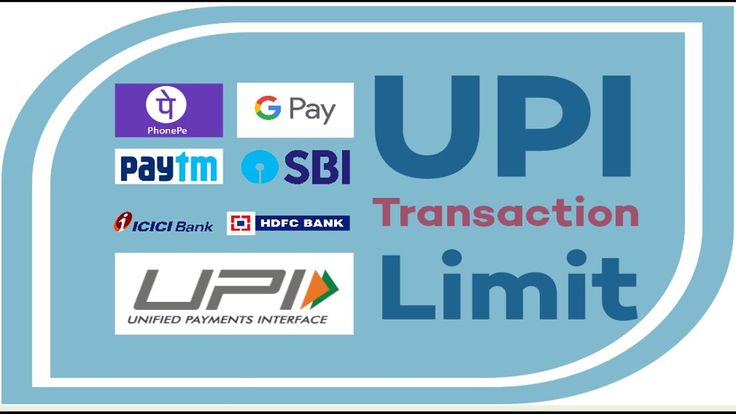In today’s fast-paced India, digital wallets like Google Pay, PhonePe, and Paytm have revolutionized how we handle finances. From paying your neighborhood chai stall to settling hefty bills at the supermarket, the Unified Payments Interface (UPI) has become the go-to method for seamless and secure transactions. But with this newfound convenience comes the question of limitations – how much can you transfer using UPI? Worry not, this comprehensive guide will equip you with all the knowledge you need to navigate UPI transaction limits in India.

Unveiling the UPI Transaction Limit Landscape
The National Payments Corporation of India (NPCI), the governing body behind UPI, sets the standard limits for daily transactions. As per their guidelines, most routine UPI transactions are capped at a comfortable Rs 1 lakh per day. This covers all your regular purchases, bill payments, and money transfers to friends and family.
Exceptions to the Rule: Higher Limits for Specific Sectors
While the Rs 1 lakh limit caters to most everyday needs, certain sectors require larger transactions. Recognizing this, the Reserve Bank of India (RBI) has implemented higher limits for specific categories:
- Education & Healthcare: Understanding the importance of uninterrupted financial support for vital services, UPI transactions for educational institutions and hospitals enjoy a significantly higher limit of Rs 5 lakh per day. This revised limit, effective from December 8th, 2023, ensures smooth fee payments and billing processes within these institutions.
- Insurance: Managing insurance premiums requires flexibility. UPI transactions related to insurance can be conducted up to a limit of Rs 2 lakh per day. This allows for easier settlement of insurance payments without exceeding the standard limit.
- IPOs & Retail Direct Schemes: Participating in the stock market often involves larger investments. To facilitate this, the transaction limit for Initial Public Offerings (IPOs) and retail direct schemes is set at a substantial Rs 5 lakh per transaction.
Understanding Bank-Specific Limits: It’s Not Just NPCI
While NPCI sets the national framework, individual banks can establish their limitations on UPI transactions within the overall guidelines. Here’s an example:
- HDFC Bank: As an illustration, HDFC Bank has set a daily limit of Rs 1 lakh or 20 transactions for both person-to-person (P2P) and person-to-merchant (P2M) transactions using UPI. If you reach this limit within 24 hours, you’ll have to wait until the next day to resume UPI transactions.
Third-Party App Restrictions: Knowing Your Limits
If you use UPI apps offered by entities other than your bank (third-party apps), the number of transactions might be capped. Typically, these apps have a lower limit compared to bank-specific UPI platforms. For instance, some third-party UPI apps might restrict the number of transactions to 10 per day. This information is usually readily available within the app itself or through the app provider’s website.
Security and the Power of UPI
One of the key factors driving the widespread adoption of UPI is its robust security features. The two-factor authentication process, coupled with the convenience of QR code scanning for smaller payments, ensures a safe and user-friendly experience.
A Recap: UPI Transaction Limits at a Glance
For a quick reference, here’s a table summarizing the various UPI transaction limits:
| Category | Transaction Limit |
|---|---|
| Regular Daily Transactions | Rs 1 lakh/day |
| Educational Institutions & Hospitals | Rs 5 lakh/day |
| Insurance Transactions | Rs 2 lakh/day |
| IPOs & Retail Direct Schemes | Rs 5 lakh/transaction |
| P2P & P2M Transactions (HDFC Bank Example) | Rs 1 lakh or 20 transactions/day |
| Third-Party UPI Apps (May Vary) | 10 transactions/day (or as specified by the app provider) |
Frequently Asked Questions
Q: Can I increase the daily limit on my UPI transactions?
A: Generally, no. The limits are set by NPCI and individual banks for security reasons. However, you can contact your bank to inquire about any exceptions or potential upgrades to your UPI account based on your banking history and needs.
Q: How do I find out the specific UPI transaction limit for my bank?
A: The easiest way is to visit your bank’s website or mobile app and search for information on UPI limits. Alternatively, you can contact your bank’s customer service department.




